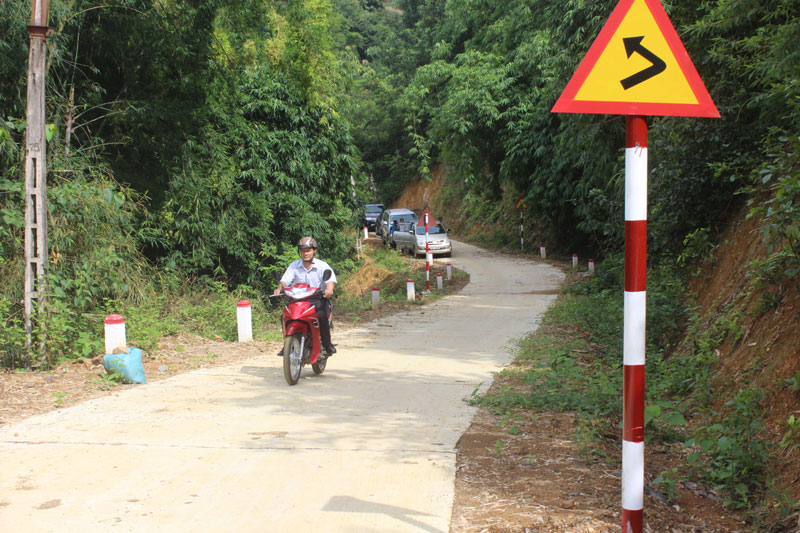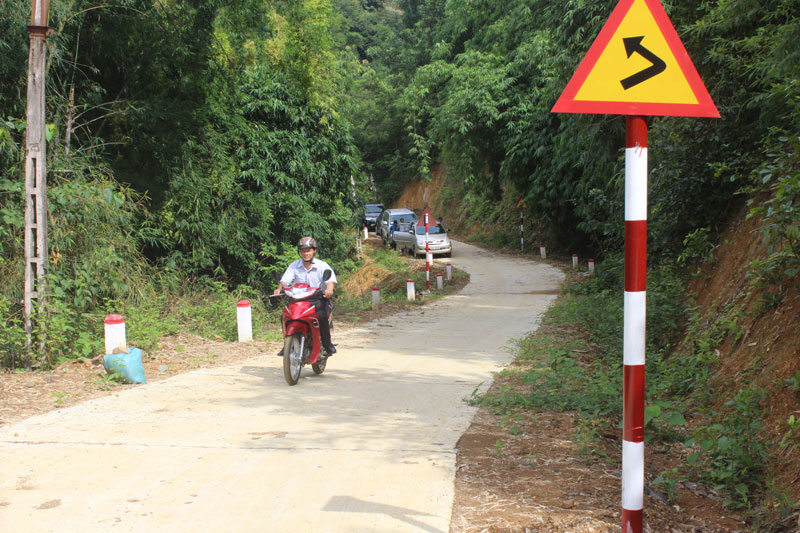



The road connecting Thai Thinh commune’s centre with Bich and
Tru hamlets facilitates the trading and travel of locals.
Mr Do Xuan Rong remembered that at that time, earning their living was extremely difficult for local residents in Tru hamlet which locates on hills. They only lingered by eating shrimp or fish caught in the lake, while fertilising soil to develop forest economy. The hamlet had no road, except hillside paths. Locals had to travel by rafts or small boats.
Thank to the attention of the Party and State, the lives of people in Tru hamlet have changed. Electricity lights up all 23 households, while the water station invested by Project 747 provides sufficient water for more than 130 locals. School-age children are offered the chance to study thanks to day-boarding classes built in the commune’s centre. In the new pace of life, locals in Tru hamlet continue promoting the tradition of solidarity to build the hamlet. More than 3km from Bich Ha wharf, the hamlet, which used to be a hotbed of drugs and gambling, has seen no criminal violations or social problems for decades. With Muong ethnic people accounting for over 70 percent of the population, Tru hamlet’s residents still maintain their traditional stilt houses, besides a charity house the Bao Viet Group presented to Mr Do Xuan Rong.
Along with the support from the State, they voluntarily donated a total
of over 8 million VND to build a 70sq.m culture house which is a venue for them
to meet. For years, Tru hamlet has also recorded no third child births and
early marriages. Therefore, since 2006, Tru hamlet has maintained its cultural
village title.
In addition to exploitation of natural aquatic resources, 22 out of 23
households in Tru hamlet have had stable incomes from 109 fish cages. On
average, each household has five cages of mudfish, black amur, grass amur,
earning around 100 million VND per year. Moreover, locals have fulfilled their
tasks of planting, caring and protecting forests. Therefore, they can have
another source of income from forest bamboo sprouts, with an average price of
6,500 VND per kg, thus helping improving their living conditions.
Thirty-seven years elapsed, Tru hamlet now has only one poor household, and
average per capita income of 34 million VND each year. Leading us to go on a
nearly-completed 3.1km-long and 3.5m-wide road connecting the commune’s centre
with Bich and Tru hamlets, Mr Dinh Xuan Hung, head of Tru hamlet expects: "Once
completed, the 51 billion VND road will open up new opportunities for locals to
travel, expand trade, and boost consumption of agricultural products and goods.
The future for the land which used to be poor is now wide-open”.